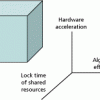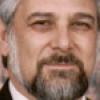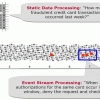Strategic advice to leverage new technologies
Technology is at the heart of nearly every enterprise, enabling new business models and strategies, and serving as the catalyst to industry convergence. Leveraging the right technology can improve business outcomes, providing intelligence and insights that help you make more informed and accurate decisions. From finding patterns in data through data science, to curating relevant insights with data analytics, to the predictive abilities and innumerable applications of AI, to solving challenging business problems with ML, NLP, and knowledge graphs, technology has brought decision-making to a more intelligent level. Keep pace with the technology trends, opportunities, applications, and real-world use cases that will move your organization closer to its transformation and business goals.
Recently Published
Effects of Big Data
Big Data Security in Hadoop
Big Data is inevitable and low latency is the need of the hour. Effectiveness in processing data has never been so relevant. If not engineered well, data processing systems that operate on Big Data are sure to suffer from performance problems. In this Executive Update, we explore an intuitive heuristic that will enable the user to understand the technical tradeoffs and learn how to performance engineer as well as tune a data processing system to effectiveness.
One of the most popular articles ever written for the Harvard Business Review was authored by Frederick Herzberg in 1968. 1 In it, Herzberg proposed a re
-
First stop: 30,000 feet. For me, one of the key messages from this issue has been the clear need for big-picture thinking.














